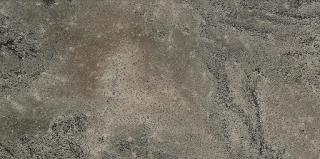Wednesday, January 24, 2024
Why is a bighorn sheep like a computer program?
Monday, January 22, 2024
Is that a petroglyph of a hunting site "bullseye"?
I have been collecting pictures of what I call "funnels". The vocabulary hasn't stabilized yet but I am talking about a "bullseye" pattern of: bald spot, surrounded by light ring of lithic debris, surrounded by a heavier ring of lithic debris, surrounded by a one or more concentric rings of fence post holes. Like this:
And like this:
You see this bullseye pattern over and over in the hills around Las Vegas and I dare say: the inner ring of lithic debris might be a good place to go look carefully at the ground ;)
Saturday, January 13, 2024
A funny thing happened when I tried to draw a map of a Nevada prehistoric hunting site
After multiple days of staring at the Nevada desert using Google Earth, I have begun to get a sense of how complicated the ancient's hunting was. So I was trying to sketch the simplest hunting-site configuration. I decided to get cute and add a little figure of a bighorn sheep to represent sheep entering the "trap". And I put a little hunter with a bow at the center of the trap. It was somewhere along in here that I realized I was recreating some of the petroglyphs I have been seeing around Nevada and Utah.
Now it is pretty obvious that petroglyphs depicting bighorn sheep and people with bows and arrows, have something to do with hunting. Why would you need this? Well, one thing is to brag about the hunt but, probably, there were some pretty memorable hunts and it is natural to want to tell the story in a permanent form (like a petroglyph).
But after I have stared at drive lines leading up to funnels on Google Earth, it occurs to me that some of the abstract "geometric" petroglyphs could be maps of the whole hunting trap - which could be 10 miles across.
I can see how a map of the whole hunting "trap" would be helpful when laying out plans for a particular hunt. The 'leader' probably wants to be very clear about different roles for different members of the hunt - where the leader will be, where the adolescent, the women (?), and the hunters (men?).
The leader has to judge the qualities of the wind and air, perhaps predicting several days of weather, and the sheep need to be spotted or anticipated in the distance. The hunters have had years to learn the traps and update them and I get a vague sense of the possibility that a map can be updated at the same time as its subject matter is updated - and that the above shows glyphs of different ages.I know, from looking at the pictures of Google Earth that drive lines and separate "Kill Zones" can be too complicated to understand. The landscape was just as complicated in the past. Did they use smoke signals?
So here is my real proposition: it will be found that some of these hunting site petroglyphs match nearby topography and the layout (topological not metric) of a miles-wide hunting trap. [Ths is probably not an original statement.]














